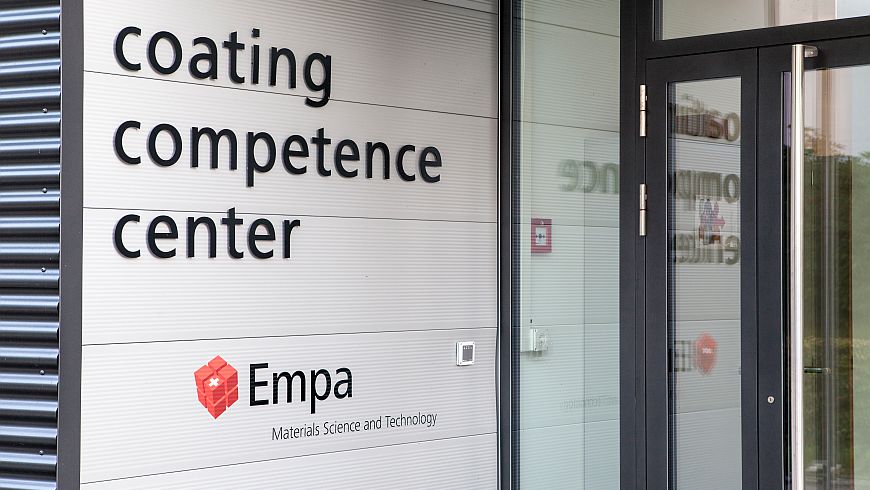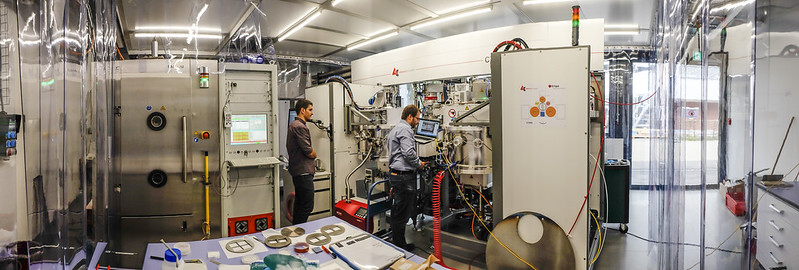Functional coatings: advantage for Swiss industry
Coating Competence Center inaugurated
At Empa’s new Coating Competence Center, which has just opened, tailor-made surface technologies find their way from the research labs to marketable industrial applications. The center boasts diverse coating systems for hard coats, flexible photovoltaics and organic electronics, not to mention 3D printers for metallic and bio-composite materials. In terms of process technology, the equipment is on an industrial scale, but it contains modifications that enable the researchers to conduct detailed process analyses. This should make the upscaling easier for Swiss industry and give it an innovative edge among the international competition.

Innovation catalysts at the interface between research and industrial application
The next step: a “Center for Advanced Manufacturing”
As a result, Empa runs the CCC in close collaboration with Swiss industrial partners. It is to be expanded further in the next few months and equipped with additional facilities. In the long term, the CCC should even develop into the Center for Advanced Manufacturing, where the collaboration between research and industry is extended to other areas of production and manufacturing technologies. The ideal sponsorship for this would be a public private partnership, where research institutions and Swiss industry are equal partners. “Pre-competitive research is very expensive and highly unlikely to succeed without financial support from industry,” says Gröning. At the same time, it is a vital step towards translating scientific discoveries into innovative products.
At the inauguration of the CCC, the visitors already had the opportunity to witness various systems in action – such as two cutting-edge 3D printers for so-called “additive manufacturing”. One printer can turn metal powder into prototypes and serves the development of novel metal composite materials, the other processes emulsions and bio-materials. The latter is used for tests with novel composite materials made of cellulose crystallites in a polymer matrix, for instance. Other CCC equipment produces printed electronic components from organic substances. These electronics are considerably cheaper to make than existing customary silicon components. Prototypes of electronic circuits or OLED light fixtures can be produced on a special high-precision printer, for example.
Further information
Dr. Pierangelo Gröning
Department of Advanced Materials and Surfaces
Member of Empa's Board of Directors
Phone +41 58 765 40 04
Editor / Media contact
Rainer Klose
Communications
Phone +41 58 765 47 33

Empa image gallery
-
Share

